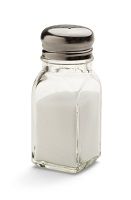Study: Salt Guidelines too Strict
Older people can safely eat just as much salt daily (2300 mg) as younger adults, according to a community-based study reported in JAMAInternal Medicine The current recommendation is 1,500 mg for adults over 50, or a little more than a teaspoon.

Older people can safely eat just as much salt daily (2300 mg) as younger adults, according to a community-based study reported in JAMAInternal Medicine
The current recommendation is 1,500 mg for adults over 50, or a little more than a teaspoon.
But a study by Andreas Kalogeropoulos, MD, MPH, PhD, of Emory University in Atlanta, GA, looked a cardiovascular disease (CVD) and heart failure (HF) in 2,642 adults age 71 to 80. Over a 10-year period, of the adults who survived (there were 881 deaths) they found no correlation between salt intake and the incidence of CVD or HF.
“Ten year mortality rates were 33.8 %, 30.7%, and 35.2% among participants consuming less than 1,500 mg daily and from 1,500 mg daily to 2,300 mg daily and greater than 2,300 mg daily of sodium,” Kalogeropoulos wrote.
In fact, he wrote, restricting salt too much could “unfavorably modulate insulin resistance, serum lipid levels, and neurohormonal activity, factors that predispose to CVD and HF.” Avoiding salt consumption could also leave older people with too few choices of foods they like, leading to poor nutrition.
“Our data emphasize the need for stronger evidence, preferably from rigorous controlled trials testing additional thresholds for sodium intake, before applying a policy of further sodium restriction to older adults beyond the current recommendation for the general adult population (2,300 mg. daily,’ he concluded.
The participants’ use of salt was self-reported.
The subjects were mostly female (51.2%) and white (61.7%) and all were reasonably active—able to climb stairs, walk, conduct activities of daily living and communicate without obvious impairment.
The researchers noted the study was not designed the upper safety limits of salt consumption in the group. “However a signal for potential harm was observed with greater than 2,300 mg daily,” they wrote. .